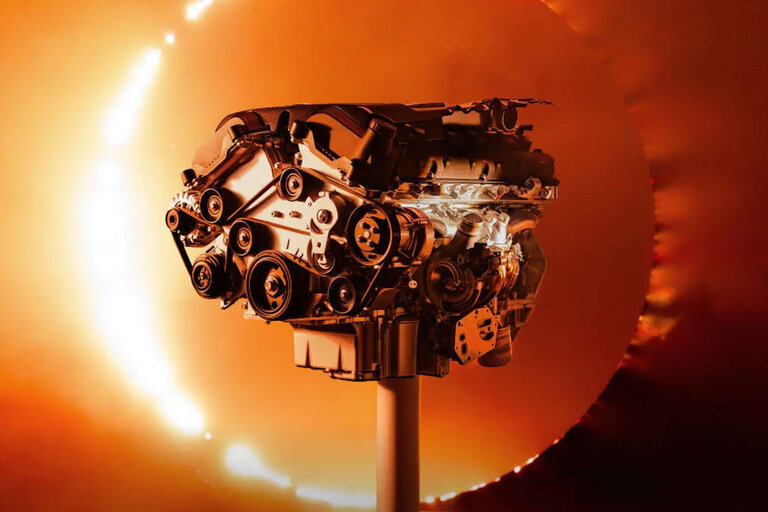
From the January 2023 issue of Car and Driver.
There is only one question on the FAQ page for the Self Racing Cars (SRC) website: “Why would I come watch this? It seems boring.” I kinda thought the same when I was invited to see the SRC group at WeatherTech Raceway Laguna Seca. Why would I watch that? But the SRC event coincided with the Velocity Invitational, a gathering of vintage race cars that sounded very not boring, so I headed to Monterey to see what line self-driving race cars take in the Corkscrew.
Backward is the answer, at least for the Lexus CT that Point One Navigation brought out. The red hatchback ran the course in reverse—and in Reverse. “Our test driver says it was faster than he was,” says Daniel Gruver, director of product for Point One. Well, sure, the camera-rigged CT has eyes in the back of its head and no sense of how wrong it feels to head up Laguna’s famous hill, taillights first.
Turns out the racing part of SRC is a bit of a misnomer, or, as SRC founder Joshua Schachter says, “aspirational.” Schachter organized SRC as a competition not of driving but of engineering, a chance for developers and others working in the autonomous field to collaborate and test in a place free of cross-traffic. Some cars steered themselves, others worked via remote control, and some were human driven as they gathered data for future projects. One SRC “racer” was an engineer playing with autonomy on his personal Porsche 911 GT3 for reasons he didn’t want to talk about. “It’s not ready yet,” his pal told me.
As we keep hearing, most autonomy isn’t ready for the road or even the road course. Self-driving cars aren’t at a place where they can rip around a track, actively blocking and making split-second decisions to skip the apex and ride the wall like NASCAR driver Ross Chastain did back in October. “Racing dynamically is a lot to instrument,” Gruver says. “Humans are very good at this.” Most SRC machines depend on a human driver to map out the line, and the challenge is combining software and hardware to make the most of that mapping. For Point One, the mapping is, uh, point one, as the company specializes in highly accurate navigation systems. Testing on track is a good way to see how well its programs can recognize a coordinate down to a few centimeters. “Normal GPS accuracy is maybe three meters,” Gruver says. That could put you 10 feet off the racing line. Point One is working on getting its maps within three centimeters.
Ain McKendrick, CEO of Faction Technology, is working on small, driverless EVs for use as remote-operated delivery vehicles. “Sitting in traffic to return a rental car at the airport or delivering DoorDash—that’s not driving anyone is excited to do. Plus, a robot won’t eat your fries.” He says several exotic-hypercar companies have also expressed interest in Faction’s tech. “For a performance car, it can reposition it in a garage or show you a [better] line on track. Once you have a digital car, the possibilities are pretty vast.”
A very analog 1971 Mini Cooper sat a few pit stalls away, its roof all toad bumped with zip-tied cubes and cylinders. Adam Rodnitzky of Tangram Vision uses the Mini—his own—as a rolling test bed to verify the company’s software. It stitches information from the roof-mounted sensors, including lidar, radar, and 3-D cameras, into a topographical map of the car’s surroundings. Rodnitzky gave me a ride and admits he enjoys these events as an excuse to get on track himself. Many SRC participants are true driving enthusiasts, he says. “We know autonomy is coming, and you can be bitter about it or figure out a way to make it work with what you love.”
Self-racing cars may seem boring, but the people building them definitely aren’t.
This content is imported from OpenWeb. You may be able to find the same content in another format, or you may be able to find more information, at their web site.
#Perfect #Line #Code #Drivers
Source link





